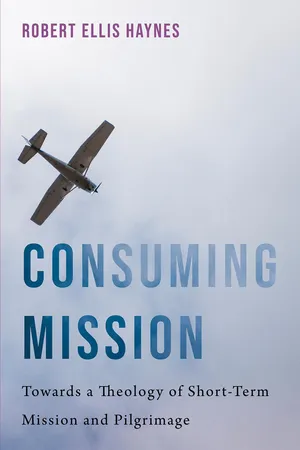![]()
SECTION I
The Landscape of Mission Theology
![]()
1
The Biblical Mandate for Mission
To better understand the contemporary STM movement we must begin with a discussion of the biblical mandate for mission and the way the church has sought to practice mission thus far. This first section will help us see how mission theology drives mission practice. This first chapter will briefly explore the biblical mandate for mission. The subsequent chapters in this opening section will examine how the church has understood its role in mission practice. Chapter 2 will examine historical practices of mission and the development of an important mission concept for contemporary practice: the missio Dei. This discussion will help us map the landscape of mission theology and find our current place on that landscape. In chapter 3, we will narrow our focus to the missional work inside the Wesleyan movement before moving on to an examination of mission in the STM movement in chapter 4. But first it is important to offer a preliminary definition of “mission” to better understand our vantage point as we survey the terrain.
The way in which many use the term “mission” is a recent development, with an important shift in that usage coming in the mid-twentieth century. A dramatic rise in the use of the word coincided with this shift in meaning. Until the 1950s the term was often used to mean the sending of one to work in a distant place, the activities of those missionaries, the designated areas where the missionaries were at work, the agency that sent them, or the object of the Christian work of conversion. In ecclesial terms, it has come to include fresh connotations that could include nurturing fledging congregations in a new context or a concentration of evangelistic services. In theological conversations, both historical and contemporary, it has been used to describe, as missiologist David Bosch puts it, “(a) propagation of faith, (b) expansion of the reign of God, (c) conversion of the heathen, and (d) the founding of new churches.”
The term itself “presupposes a sender, a person, or persons sent by the sender, those to whom one is sent, and an assignment.” It supposes that those who participate in mission have a right to do so, or assume that they do. Historically, it is the church that said it had the right to do so. Until the sixteenth century, the term was used to describe God’s action in the sending of his Son Jesus and the Father and the Son sending the Holy Spirit into the world. The Jesuits were the first to use the term in the sense of spreading of the Christian faith to others, including Protestants. In the present day, as theologian Kirsteen Kim points out, “[m]ission has. . .become accepted by Christians of virtually all persuasions as ‘a participation in the movement of God’s love toward people shown in Christ.’”
Martin Kähler says that mission is the “mother of all theology.” Theological expression finds its roots in an understanding of mission. The church’s foundation is laid upon a missionary theology. The gospel writers sought to not merely give a historical impulse, but the account of a deep faith in Jesus Christ to their known world. The Evangelists’ writings, and instructions and demonstrations for mission, were not “produced by historical impulses but as expressions of an ardent faith, written for the purpose of commending Jesus Christ to the Mediterranean world.” This mission would be expressed in various ways by the New Testament writers. So much, in fact, that there is no single, all-encompassing term for mission in the New Testament. Instead, there are at least “ninety-five Greek expressions which relate to essential but frequently different aspects of the New Testament perspective on mission.” The New Testament writers did not dwell on providing a definition of mission for their readers, but instead to emphasized the necessity of a missionary existence.
For centuries, Christians have argued that the motivation for mission should be shaped and formed by Christian Scripture. Wesleyan theology’s emphasis on concerted and thoughtful reflection on Scripture is helpful when developing a mission theology. Mission is the proclamation of Jesus’ message that is demonstrated in the biblical literature. Any understanding of biblical mission is, of course, dependent on a view of the nature of Scripture. For our purposes, I will outline two broad approaches to viewing Scripture to help distinguish the lens we will use in our discussion. One can see Scripture as religion-historical or salvation-historical. The religion-historical approach sees the biblical Scriptures as an evolutionary product. In this view, the Old Testament accounts of the history of Israel, the life and work of Jesus, and the beginnings of the church are all seen in terms of human evolutionary growth of religious understanding. This anthropocentric view of God, and the surrounding concepts of worship and ethics, are all human constructs. Likewise, mission is understood in a similar fashion. To this type of thinking, the act of mission is yet another development in the human invention of God and the idea of sharing religious convictions is centered in humankind’s desire to meet the needs of another. However, as Andreas Köstenberger correctly argues, to view Scripture as a solely human conception as a part of a growing religious consciousness has “devastating effects on one’s view of Scripture,” as well as one’s understanding of the crucifixion, death and resurrection of Jesus, and the deity of Christ: “For where there is no inspiring, revealing, redeeming God who intervenes in human history, there is no unity of purpose, but only diversity of human religious views.”
A salvation-historical model, on the other hand, at its core, understands Scripture to be divine revelation. It is a record of God’s disclosure of his very nature and his redemptive acts, both of which are offered to his people. The Scriptures, then, are not an attempt to codify human religious consciousness, ...
